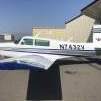Gear Up Landings
-
Members Online
- MDMooney
- 802flyer
- Grumpy
- ta2too
- mariosmt
- Meshach
- Rmnpilot
- Piaggio410
- Peter T
- Fly Boomer
- Ethan
- EKoS
- redbaron1982
- LANCECASPER
- wombat
- chugach
- flyfast
- CAV Ice
- EricJ
- 00-Negative
- toto
- peterl
- KLRDMD
- Greg Ellis
- IgorD
- C.J.
- CChris
- 47U
- eyes_skyward
- Sheriff23
- Zippy_Bird
- Shadrach
- JoeM
- hazek
- hammdo
- richardbrochu27
- fmg85
- wivika2537
- Skyhighguy


Recommended Posts
Join the conversation
You can post now and register later. If you have an account, sign in now to post with your account.